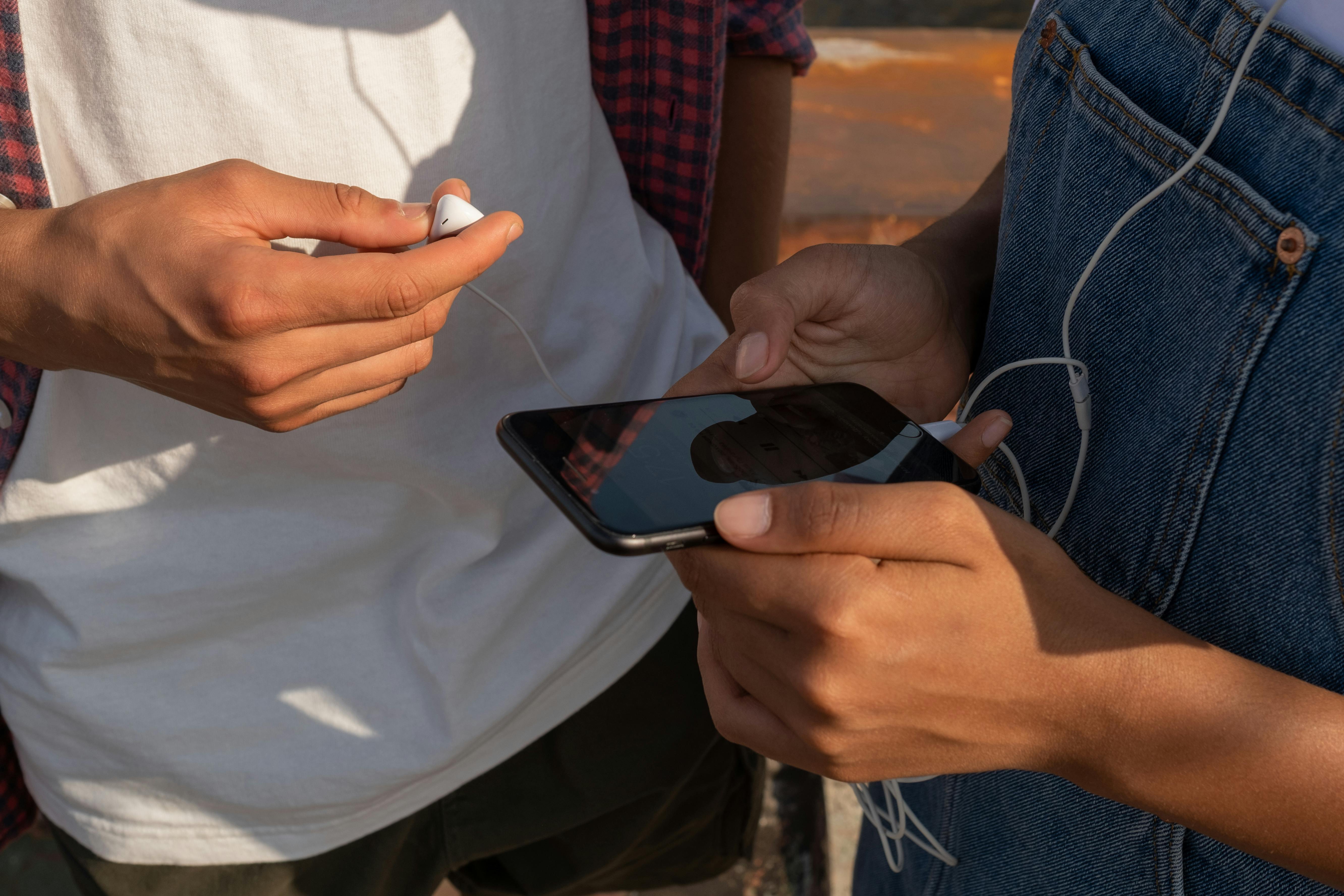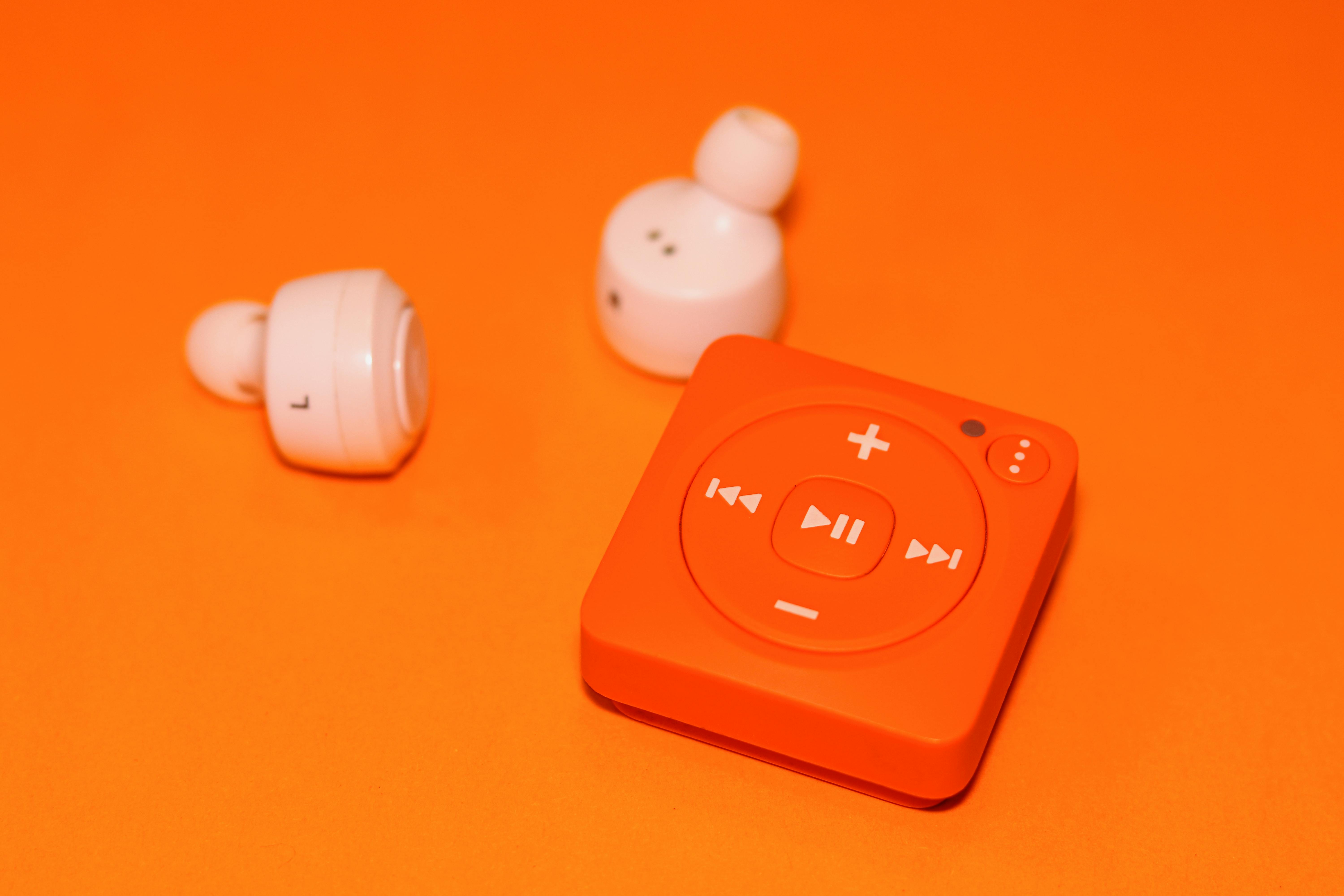So, you want to YouTube convert MP4 to M4R, huh? Sounds simple enough, but why is no one talking about how tricky it actually can be to create your own custom ringtones from YouTube videos? I mean, you’d think this would be obvious, right? Just grab the video, convert it, and boom—ringtone ready. Not gonna lie, this surprised me too when I first tried it. There’s a bunch of little steps and weird file formats that can trip you up if you’re not careful. But hey, that’s why I’m here to break down how to easily create those perfect, personalised ringtones without losing your mind.
Maybe it’s just me, but I’ve always found the whole process of YouTube MP4 to M4R conversion a bit messy — and let’s be honest, who even knows what M4R really means? Spoiler: it’s the magic format your iPhone loves for ringtones. So if you’re fed up with the generic sounds on your phone and wanna jazz things up with some custom audio, this guide’s gonna be your new best mate. We’ll cover everything from grabbing the video, converting it properly, to setting it up as your ringtone. Plus, I’ll share some sneaky tips to make sure you don’t end up with weird audio glitches or files that just won’t play.
And here’s a power question for you: What if we’ve been wrong all along about how complicated ringtone creation should be? I say, let’s cut through the fluff and get straight to the good stuff. Stick around, because by the end of this you’ll be a pro at youtube convert mp4 to m4r, and your phone will sound exactly how you want it. Sound good? Let’s dive in!
What Is M4R Format and Why Convert YouTube MP4 to M4R for Ringtones?
You ever found yourself stuck with a banging YouTube video — like that one indie track or a hilarious clip — and thought, “Hey, I want this as my ringtone!”? But then, boom, you realise YouTube videos are in MP4 format, which is video, not audio, and your phone’s like, “Mate, I don’t do that.” Enter the mysterious world of M4R files. Not exactly a household name, right? So, what is this M4R format and why on earth would you wanna convert YouTube MP4 to M4R for ringtones? Pull up a chair, I’m gonna try and make some sense of this without losing my mind.
What Is M4R Format Anyway?
Okay, so M4R is basically the official ringtone file format used by Apple devices — like your iPhone. It’s basically an AAC audio file, but with a twist: the file extension is .m4r instead of .m4a. Apple decided to be all special and assign a unique extension to ringtones, presumably to keep things neat or confuse us mere mortals.
- M4R = AAC audio codec + ringtone file extension
- Exclusive to iOS ringtones
- Max length usually capped at 40 seconds (annoying, but that’s how Apple rolls)
Seriously, who even came up with this? Why not just let us use normal audio files? But noooo, Apple had to make it complicated with proprietary formats and restrictions. Maybe it’s just me, but it feels like they’re doing it just to keep us on our toes.
Why Convert YouTube MP4 to M4R for Ringtones?
Alright, so you’ve got this YouTube video saved as MP4. MP4’s a container, which means it can have video and audio inside. Your phone’s ringtone system, especially on iPhones, doesn’t want the video part — it only wants the audio in a very specific format.
Here’s why converting makes sense:
- Compatibility – iPhones won’t let you slap an MP4 video as a ringtone. M4R is the accepted format.
- File size – M4R files are audio-only and usually smaller, so less space wasted.
- Customisation – You can crop the audio to your favourite 30-40 seconds (goodbye, annoying long intros).
- Better sound quality – AAC audio is decent quality and often better optimised for phones than MP3 or WAV.
Honestly, it’s a bit of a faff but if you wanna personalise your ringtone without buying crap from iTunes, converting YouTube MP4 to M4R is the way to go.
YouTube Convert MP4 to M4R: How To Easily Create Custom Ringtones
Okay, this is the bit where I try to keep it simple, but let’s face it, tech stuff always gets messy. Here’s a rough step-by-step you can follow to convert your YouTube MP4 to a sweet M4R ringtone:
Download the YouTube video as MP4
Use some YouTube downloader (plenty out there, just Google it) to get the MP4 file. Be mindful of copyright, obviously.Extract the audio from MP4
You can use free software like VLC Media Player or online converters to rip the audio track. This usually saves it as MP3 or M4A.Convert audio to M4R
Use an audio converter tool (online or desktop apps like iTunes, Audacity with plugins, or dedicated converters) to change the file extension to .m4r and adjust the length.Trim the audio
Most phones don’t want ringtones longer than 30-40 seconds. Trim your file to your favourite snippet.Transfer to your iPhone
Connect your iPhone to your computer, and either use iTunes or Finder (on Mac) to drag and drop the M4R file into your device’s ringtone section.Set it as ringtone
On your iPhone, go to Settings > Sounds & Haptics > Ringtone and pick your custom creation.
Honestly, it sounds more complicated than it is, but there’s a weird thrill in making your own ringtone instead of settling for the default noises that everyone else uses.
A Quick Table to Compare Audio Formats for Ringtones
| Format | Compatibility | File Size | Quality | Usage Notes |
|---|---|---|---|---|
| MP3 | Universal | Moderate | Good | Not accepted by iOS as ringtone directly |
| M4A | Good | Small | Better | Audio files, but not ringtone on iOS |
| M4R | iPhone only |
Top 5 Easy Methods to Convert YouTube MP4 to M4R on Windows and Mac
Alright, hear me out — converting YouTube MP4 videos into M4R files might sound like one of those oddly specific tasks that only a handful of people care about, but apparently, it’s a thing. Like, who knew? Maybe it’s just me, but I never really thought about turning a YouTube clip into a ringtone before. But hey, if you’re here, you probably did, or you’re just really curious about “youtube convert mp4 to m4r” stuff. So, let’s dive in — and I’ll try not to bore you to tears, promise.
Why Bother with YouTube MP4 to M4R Anyway?
First off, M4R is the format Apple uses for iPhone ringtones. So if you’re rocking a shiny new iPhone and want a ringtone that’s not some overplayed chart hit or your mate’s terrible banjo cover, making a custom ringtone from your favourite YouTube video might be the way to go. It’s kinda niche, sure, but it’s also a neat little flex — “yeah, that ringtone? Totally custom, thank you very much.”
YouTube videos are mostly MP4 files (video + audio). To create a ringtone, you need just the audio bit, and in the right format (M4R). Easy, right? Not always. Windows and Mac handle things differently, and some tools are clunky or outright confusing. So, here’s a rundown of the top 5 easy methods to convert YouTube MP4 to M4R on both platforms. Grab a cuppa, this might take a bit.
1. Using Online Converters (Windows & Mac Friendly)
Look, online converters are the lazy person’s dream come true. You just upload your MP4 (or paste the YouTube URL), select M4R as the output, and boom — ringtone ready. No installations, no faffing. But beware:
- Sometimes these sites are full of annoying ads.
- Uploading large files can be a nightmare.
- Privacy? Meh, your audio’s floating around somewhere.
Popular sites include:
- Online Audio Converter
- Zamzar
- Convertio
They’re simple enough, but you gotta have a decent internet connection and the patience of a saint.
2. VLC Media Player (Windows & Mac)
Seriously, VLC is the Swiss Army knife of media players. Most people just use it to watch videos, but it can do basic conversions if you dig a bit. Here’s the gist:
- Open VLC, go to Media > Convert/Save.
- Add your MP4 file.
- Choose “Audio – MP4/M4A” profile and tweak the extension to .m4r.
- Hit convert.
It’s not the most straightforward, and changing the extension manually feels like a hack, but it works. Just don’t expect fancy editing options.
3. iTunes (Mac Only, Sort Of on Windows)
Ah, iTunes — love it or hate it, it’s Apple’s go-to. You can convert audio files to AAC format, which is basically an M4A file. Rename it to M4R, and you’re golden. The steps are:
- Import MP4 audio into iTunes (you’ll need to extract audio first, so maybe use VLC or an online tool).
- Convert the song to AAC.
- Locate the file, change the extension to .m4r.
- Sync with your iPhone.
Not the most elegant, and iTunes is notoriously annoying, but it’s native and free if you’ve got a Mac.
4. Dedicated Software: iMazing or Any Audio Converter
If you’re serious about making ringtones (or just hate online tools), dedicated software might be worth the hassle. Programs like Any Audio Converter (free) or iMazing (paid, but nifty) let you convert MP4 to M4R with more control — trimming, quality settings, batch converting, etc.
Pros:
- More control over the final ringtone.
- No upload limits.
- Batch processing.
Cons:
- Installation required.
- Possible trial versions or paywalls.
Pretty solid if you plan on doing this often.
5. Audacity + FFmpeg (Advanced, but Free)
Okay, if you’re feeling brave and want to get your hands dirty, Audacity is a free audio editor that, teamed up with the FFmpeg plugin, can import MP4 files and export M4R files (well, M4A renamed to M4R). It’s a bit geeky and requires some setup, but it’s super powerful.
Steps:
- Install Audacity and FFmpeg.
- Import the MP4 file.
- Edit the audio (trim, fade, whatever).
- Export as M4A, then rename to M4R.
This is for the folks who like tink
Step-by-Step Guide: How to Turn YouTube Videos into Custom M4R Ringtones
Alright, so you’ve probably stumbled here wondering, “How on earth do I turn my fave YouTube video into a ringtone that actually plays when my phone rings?” Yeah, it sounds bonkers, but seriously, making custom ringtones from YouTube vids is a thing. And not just any ringtones, but those neat little M4R files that iPhones adore like kids love candy. If you’re scratching your head about “youtube convert mp4 to m4r” or just trying to figure out the whole YouTube convert MP4 to M4R jazz without losing your mind, you’re in the right place. Let’s dive into this mess of digital wizardry, shall we?
Why Bother Turning YouTube Videos into M4R Ringtones?
Okay, first off: why bother? Well, custom ringtones let you stand out, or at least annoy your mates with your questionable taste in sounds. Plus, let’s admit, default ringtones are duller than a wet weekend in Yorkshire. YouTube’s a goldmine for all sorts of audio — from weird soundbites to that catchy tune you can’t get out your head.
A quick history nugget: M4R files are basically AAC (Advanced Audio Codec) files but with a different extension, designed specifically for iPhone ringtones. Back in the day, you had to buy ringtones or mess about with iTunes to create them. Now, with the magic of the internet and some sketchy websites, you can have your ringtone made from a YouTube vid faster than you can say “Download complete.”
Step-by-Step Guide: How to Turn YouTube Videos into Custom M4R Ringtones
Right, here’s the nitty-gritty. I’m gonna assume you’re not some tech genius, so I’ll keep it chill and simple. No fancy jargon, promise.
Find Your YouTube Video
Pick the clip or song you want. Something short-ish because ringtones are best when they don’t drag like a Monday morning. Copy the URL — you know, the link at the top.Download the Video as MP4
Here’s where the first headache begins. You can’t just download vids from YouTube directly unless you’re a YouTube Premium user (which most ain’t). So you’ll need a third-party downloader. Websites like Y2Mate, SaveFrom.net, or similar free tools do the trick. Just paste your URL, choose MP4 format, and hit download.
Side note: These sites can be dodgy, with pop-ups and ads. Sometimes it’s like dodging landmines. Be careful.Convert MP4 to M4R Format
Now, you’ve got your MP4 file chilling on your computer. But iPhones want M4R files for ringtones, not MP4s. You’ll need a converter — I swear there are loads, online converters like Zamzar or Convertio can do this without installing anything.
Upload your MP4 file, select M4R as the output, and convert. Simple-ish. Then download the M4R file.Trim the Audio (Optional but Recommended)
Ringtones shouldn’t be longer than 30 seconds, otherwise, it’s just annoying. Some converters let you trim the audio before converting, or you could use an audio editor like Audacity (which is free but a bit fiddly).
Honestly, I just wing it and hope for the best half the time.Add the M4R File to Your iPhone
This is the slightly fiddly bit. You need to sync your ringtone to your iPhone using iTunes (or the Music app on macOS Catalina and later).- Open iTunes and drag the M4R file into the Tones section.
- Connect your iPhone via USB.
- Sync your device.
- On your iPhone, go to Settings > Sounds & Haptics > Ringtone, and select your new masterpiece.
And that’s it! You’re now the proud owner of a custom ringtone made from a YouTube MP4 video.
YouTube Convert MP4 to M4R: The Tools You’ll Probably Use
Since we’re all about making life easy (or pretending to), here’s a quick rundown of tools I’ve tried or heard good things about:
| Tool Name | What It Does | Pros | Cons |
|---|---|---|---|
| Y2Mate | YouTube to MP4 downloader | Free, no software installation | Loads of ads & pop-ups |
| Zamzar | File converter (MP4 to M4R) | Easy web interface | Upload size limits |
| Audacity |
Best Free Online Tools to Convert YouTube MP4 Files into M4R Ringtones
Alright, so you wanna turn your fave YouTube MP4 clips into M4R ringtones, huh? Honestly, who even thinks about this stuff till one day you’re bored at 2am and decide your phone ringtone needs a bit of personality (or a lot). But yeah, converting YouTube videos to M4R files — which, by the way, is basically the ringtone format for iPhones — is kinda a niche skill. Not really sure why this matters to most people, but here we are. Maybe it’s just me, but having that one weird ringtone you made from some random YouTube video feels oddly satisfying. Anyway, what was I saying again? Oh right — best free online tools to convert YouTube MP4 files into those coveted M4R ringtones. Let’s dive in.
Why Even Bother With M4R? Can’t I Just Use MP3?
So, M4R is basically Apple’s ringtone format, if you didn’t know. It’s just an AAC audio file but with a different extension. MP3s are fine for Androids and most other devices, but if you’re an iPhone user (which, let’s be honest, a lot of New Yorkers are), you gotta have that M4R file to set custom ringtones properly. Apple’s kinda stubborn about this stuff, which, seriously, who even came up with this? Why can’t they just let us use MP3s like normal people? Anyway, that’s the deal.
If you’re wondering why not just buy ringtones from the iTunes store — well, sure, you could but why pay when there’s a bunch of free tools out there to convert YouTube MP4s into M4R files? Plus, it’s fun and feels kinda hacker-ish, even if you have zero clue what you’re doing.
Best Free Online Tools to Convert YouTube MP4 to M4R Ringtones
Alright, now onto the goods. There’s loads of free websites claiming to do the job, but not all of them are worth your time (or your sanity). Here’s a quick rundown of some of the better ones I’ve tried — with pros and cons, because I know you’re picky like me.
Online Audio Converter (online-audio-converter.com)
- Pros: Supports M4R output, easy interface, fast conversion.
- Cons: Ads are a bit annoying, sometimes glitches with longer files.
- Notes: You gotta first download the YouTube video as MP4 (using a downloader), then upload here to convert the audio to M4R.
Convertio (convertio.co)
- Pros: Handles YouTube links directly, converts MP4 to M4R easily, supports trimming.
- Cons: Free version limits file size, slow if a lot of users.
- Notes: Handy if you want to clip your ringtone to the perfect 30 seconds or so.
YTMP3.cc
- Pros: Super simple, can convert YouTube video URL directly to MP3 or M4A.
- Cons: Doesn’t output M4R directly, so you’ll need an extra step.
- Notes: Bit of a faff but still quick for basic stuff.
Zamzar (zamzar.com)
- Pros: Reliable, supports tons of formats including M4R.
- Cons: Limited free conversions per day, file size limits.
- Notes: Good for occasional use, but you might get tired of waiting.
MP3Cutter (mp3cutter.com) – Not just for MP3!
- Pros: Lets you trim audio files, convert to M4R.
- Cons: Requires uploading the file first.
- Notes: Perfect for making sure your ringtone isn’t 10 minutes long (which nobody wants).
Quick Step-by-Step: YouTube Convert MP4 to M4R
Okay, because I get the feeling some of you might be halfway through reading this and already confused, here’s a super simple outline. Just bear with me.
- Find your YouTube video and copy the URL.
- Use a YouTube downloader (like y2mate or similar) to download the video as an MP4 file. (Yeah, I know it sounds dodgy but it’s pretty standard).
- Head to one of the converters listed above (like Online Audio Converter or Convertio).
- Upload the MP4 file or paste the YouTube URL if the site supports it.
- Choose M4R as the output format.
- Trim the audio if you want your ringtone to be, say, 20-30 seconds max.
- Convert and download the M4R file.
- Transfer the M4R to your iPhone via iTunes or Finder on Mac.
9
How to Create Unique iPhone Ringtones from YouTube MP4 Videos in Minutes
Alright, so you wanna jazz up your iPhone with some banging custom ringtones, but not from the usual suspect iTunes store or whatever? Well, turns out, you can snag those cool sounds straight off YouTube MP4 videos and make your own unique ringtone in just minutes. Sounds like a bit of a faff, but trust me, it’s not rocket science. Or is it? Let’s dive into this madness of converting YouTube MP4 to M4R files — the magical ringtone format Apple actually recognises. Not really sure why this matters, but apparently, M4R is like the VIP pass for your iPhone ringtones.
Why Bother Creating Unique iPhone Ringtones from YouTube MP4 Videos?
Look, we all love that classic “Marimba” ringtone, but seriously — who even uses the default sounds anymore? It’s like, “Hello, I have no personality.” Also, YouTube is a treasure chest of sounds, from weird movie quotes to obscure indie band riffs. So, if you want to stand out in a sea of dings and pings (and avoid the cringe of someone else using the same ringtone), making your own is the way to go.
Plus, it’s kinda fun? Except when stuff goes sideways. But hey, at least you’re not stuck with those generic tunes.
The Basics: What’s This MP4 to M4R Conversion All About?
Right, so here’s the deal: YouTube videos are typically MP4 files when you download them (if you can, more on that later). But your iPhone won’t accept an MP4 as a ringtone. It demands M4R files — basically AAC audio files with a fancy extension. Weirdly specific, right? Apple’s way of keeping us on our toes, no doubt.
So, the process is:
- Download the YouTube video as an MP4.
- Extract the audio part (because, duh, you don’t want the whole video as a ringtone).
- Convert that audio to M4R format.
- Upload it to your iPhone via iTunes or Finder (depending on your macOS version).
- Set it as your ringtone.
Easy? Not exactly. But doable.
Step-by-Step: How to Create Custom iPhone Ringtones from YouTube Videos
Here’s a rough guide, but warning — tech stuff might get frustrating, and there’s always that one step that trips you up.
Find your YouTube video
Pick a clip you love. Could be a funny soundbite or a track you can’t get outta your head.Download the MP4
Use a YouTube downloader tool. There’s tons online — some sketchy, some legit. I’d recommend picking a reputable one or risk your PC getting weird viruses. Seriously, who even came up with this?Convert MP4 to MP3 or directly to M4R
Sometimes these tools let you convert straight to M4R. If not, just grab the audio in MP3 first. Audacity or online converters work too.Trim the audio
iPhone ringtones can only be 30 seconds max. So chop your clip down. You can do this in Audacity, GarageBand, or even those online editors.Convert to M4R
This is the key: changing that file’s extension and format to M4R. Some converters handle this automatically. If you’re on a Mac, GarageBand exports ringtones straight to M4R, which is a lifesaver.Add the M4R file to iTunes or Finder
Yep, you gotta sync the file to your phone. On older macOS versions, use iTunes; newer ones use Finder for syncing.Set the ringtone on your iPhone
Go to Settings > Sounds & Haptics > Ringtone, and pick your masterpiece.
Quick Table: MP4 to M4R Conversion Tools Comparison
| Tool/Method | Pros | Cons | Notes |
|---|---|---|---|
| Online Converters | Fast, no software install | Ads, sometimes sketchy | Watch out for malware |
| Audacity + iTunes | Free, versatile audio editor | Requires manual steps | Need some tech savvy |
| GarageBand (Mac) | Exports directly to M4R | Mac-only | Best for Apple users |
| Dedicated Apps (e.g. iRingg) | User-friendly, quick | Usually paid | Worth it if you do this often |
A Bit of History (Because Why Not?)
YouTube started off in 2005 as just a place to share cute kitten vids and awkward home footage.
Troubleshooting Common Issues When Converting YouTube MP4 to M4R Format
Alright, so you’ve probably found yourself tangled in the mess that is trying to convert YouTube MP4 files into M4R format. Yeah, I know, sounds straightforward, right? Spoiler alert: it’s not. Especially if you want a decent custom ringtone without losing your mind. Honestly, who even decided we needed to go from MP4 to M4R? Like, couldn’t Apple just let us use MP4s directly? Anyway, I’m here to help you figure this out (or at least rant about it while you try).
Troubleshooting Common Issues When Converting YouTube MP4 to M4R Format
First off, if you’re not familiar, M4R is basically the ringtone format used by iPhones. It’s a variant of the AAC audio format but with a different extension. So, converting an MP4 (which is a video file, mostly) to M4R means you’re stripping out the video and keeping the audio, but it’s not always smooth sailing.
Here’s a quick list of typical headaches you might bump into:
- File Compatibility Errors: Some converters just don’t accept YouTube MP4 files, especially if they’re DRM-protected or have weird codecs.
- Audio Quality Loss: Sometimes, when converting, the sound gets all crackly or muffled. It’s like the software is punishing you for wanting a ringtone.
- Wrong File Extension: You convert successfully, but your phone doesn’t recognise the file because it’s still named .mp4 or .m4a instead of .m4r.
- Length Limitations: iPhones usually only accept ringtones up to 30 seconds. Many converters don’t trim the audio for you, so you end up with a 5-minute ringtone. Yeah, no thanks.
- Metadata Issues: Your ringtone might not show up with the right name or artist info on your phone. Not a deal-breaker, but annoying.
Honestly, the number of times I’ve had to go back and forth because of one of these is borderline ridiculous. Seriously, who even came up with this whole format nonsense? Oh, wait, Apple. Figures.
YouTube Convert MP4 to M4R: How To Easily Create Custom Ringtones
Okay, enough moaning. Let’s get to the meat of it: how to actually do this without wanting to throw your laptop out the window.
Step 1: Download the YouTube MP4 file. Use a reliable YouTube downloader. Be wary of dodgy sites, they’ll try to serve you ads for days or worse, malware. Pro tip: browser extensions sometimes work better, but they’re hit and miss.
Step 2: Extract the audio from the MP4. You can use a video converter or audio extractor tool. VLC Media Player (yes, that old thing) does this pretty well if you know your way around it.
Step 3: Convert the audio file to M4R. This is where you pick a converter that lets you specify the output format. Many online converters exist, but they often limit file size or add watermarks. A desktop app might be better if you’re going to do this a lot.
Step 4: Trim the audio to under 30 seconds. Most ringtone apps or iTunes itself will do this, but some converters also offer trimming options. Honestly, trimming after conversion is usually simpler.
Step 5: Transfer the M4R file to your iPhone. Usually, you drag it into iTunes (or the Music app on macOS Catalina and later) and sync it. If you don’t sync properly, your phone won’t see the ringtone. So, double-check your steps.
Why Does This Even Matter?
Not really sure why it’s such a big deal, but custom ringtones have this cult status. Maybe it’s just me, but I like having my phone sound different from everyone else’s. Plus, ripping a cool bit from a YouTube video or song feels like a small victory in the digital age.
Also, if you’ve ever tried to set a ringtone on an iPhone without buying one from iTunes Store, you’ll know it’s a pain. Apple’s ecosystem is like Fort Knox for ringtones. But hey, that’s their business model, so I guess we play by their rules.
Quick Comparison: MP4 vs M4R for Ringtones
| Format | Purpose | Compatibility | Typical File Size | Notes |
|---|---|---|---|---|
| MP4 | Video + Audio | Universal | Larger | Not accepted as iPhone ringtone |
| M4R | Audio only (ringtone) | iPhone only | Smaller | Must be under 30 seconds for ringtone use |
Yeah, sounds like a faff, but
How to Use VLC Media Player to Convert YouTube MP4 to M4R: A Beginner’s Guide
So, you wanna know how to use VLC Media Player to convert YouTube MP4 to M4R, huh? Yeah, I mean, who doesn’t want to turn their random YouTube vids into snazzy ringtones these days? Seriously though, this is one of those things that sounds way more complicated than it actually is, but somehow, people still get stuck on it. Like, why is converting a file extension such a drama? Anyway, here’s a beginner’s guide to help you navigate the madness of YouTube convert MP4 to M4R using VLC — because, believe it or not, VLC is not just for watching weird foreign films or buffering your dodgy downloads.
Why Bother Converting YouTube MP4 to M4R?
First off, what’s the big deal about M4R anyway? If you’re scratching your head, M4R is basically the file format Apple uses for iPhone ringtones. So, if you’ve got your favourite YouTube clip in MP4 (which is usually a video format), and you want to rip the audio out and slap it on as a ringtone, M4R is your go-to.
Not really sure why this matters to everyone, but custom ringtones are apparently still a thing? Maybe it’s just me, but I find default ringtones so boring I’d rather listen to traffic noise. But hey, if you want your phone to ring with your mate’s cat meowing or that viral sound from YouTube, converting MP4 to M4R is how you do it.
Historical tidbit: VLC Media Player was originally developed by some students in France back in 1996. It’s come a long way since then, now supporting pretty much every media format you can think of — including this weird MP4 to M4R trick.
Okay, So What’s the Deal With VLC Media Player?
If you don’t have VLC installed, just… get it. It’s free, open-source, and doesn’t bombard you with ads like some other media players. Plus, it does a ton more than just play videos — converting files is one of those hidden gems.
Here’s why VLC is actually quite handy for this:
- It supports a crazy number of input formats (like MP4, obviously).
- Allows you to convert and save to different audio formats.
- Lightweight and works on Windows, Mac, and Linux.
- Doesn’t make you jump through hoops with paid subscriptions.
Step-by-Step: How to Convert YouTube MP4 to M4R Using VLC
Right, so here’s the lowdown. I’m assuming you’ve already downloaded the YouTube video as an MP4 file — yeah, YouTube doesn’t let you download directly, so you might have used some third-party downloader. (Not that I’m endorsing that or anything… wink.)
- Open VLC Media Player.
- Go to the Media menu and select Convert / Save.
- In the window that pops up, click Add and browse to your MP4 file.
- Click the Convert / Save button at the bottom.
- Now, in the next window, under Profile, you’ll want to pick an audio format. Unfortunately, VLC doesn’t have a built-in M4R profile, so you have to select Audio – AAC (MP4).
- Click on the little wrench icon next to the profile dropdown to edit it.
- Under the Encapsulation tab, choose MP4/MOV.
- Move over to the Audio codec tab, make sure Audio is ticked, codec is MPEG 4 Audio (AAC), and sample rate is something like 44100 Hz.
- Save this as a new profile called something like “M4R Custom” (because you’re fancy).
- Back in the convert window, under Destination file, type your file name and make sure it ends with
.m4r(important!). - Hit Start and wait for VLC to do its magic.
And voilà, you have an M4R ringtone ready to go. Just transfer it to your iPhone using iTunes or Finder. If you don’t know how to do that, well, maybe Google it? Or just ask someone who’s slightly more tech-savvy.
Quick Comparison: VLC vs Other Conversion Tools
| Feature | VLC Media Player | Online Converters | Dedicated Software |
|---|---|---|---|
| Cost | Free | Usually free | Often paid |
| Ads | None | Often yes | Varies |
| Privacy | High (local only) | Low (upload files) | Medium |
| Format Support | Very high | Variable | Usually high |
Why Choose M4R Over MP3 for Your Custom YouTube Ringtones?
Why Choose M4R Over MP3 for Your Custom YouTube Ringtones?
Alright, so you’ve probably been down the rabbit hole of making custom ringtones from YouTube videos, right? Maybe you stumbled upon that “youtube convert mp4 to m4r” thing and thought, “Wait, why on earth would I bother with M4R instead of just good ol’ MP3?” Honestly, same here. I mean, MP3s have been the go-to forever, and they work just fine for, well, pretty much everything. But apparently, when it comes to ringtones—especially for iPhones—M4R steals the spotlight. Not really sure why this matters, but apparently Apple has something against MP3 ringtones? Typical.
Why M4R Even Exists Anyway?
First off, let’s get some background on this weird file extension. M4R is basically an AAC audio file (Advanced Audio Coding) wrapped up with a different extension just for ringtones. It’s like the same song, but wearing a different hat. Apple decided to use M4R for iPhone ringtones because it supports better audio quality at smaller file sizes, and crucially, iOS devices won’t let you set MP3 files as ringtones without some annoying workarounds. Seriously, who even came up with this? Probably someone who likes making life difficult.
Here’s a quick comparison table because I like those and they make me feel organised:
| Feature | MP3 | M4R (AAC) |
|---|---|---|
| Audio Quality | Decent, lossy | Better at same bitrate |
| File Size | Larger for same quality | Smaller, more efficient |
| iPhone Ringtone Support | Not officially supported | Native ringtone format |
| Compatibility | Almost universal | Mostly Apple devices |
So, if you’re someone rocking an iPhone and want a custom ringtone from your favourite YouTube clip, M4R is kinda the way to go. On Android, you can usually get away with MP3s, but again, if you want that seamless iOS experience, M4R is the boss.
YouTube Convert MP4 to M4R: How To Easily Create Custom Ringtones
Now, onto the juicy bit—how on earth do you convert your downloaded YouTube video (which is usually MP4) into M4R? Because, yeah, YouTube videos are MP4 files: video + audio. We want just the audio part for ringtones.
Here’s a painfully simple step-by-step:
- Download the YouTube video as MP4 – Use any of those sketchy-yet-functional YouTube downloaders online. (No judgment here, I do it too.)
- Extract Audio from MP4 – You need to rip the audio track. Some converters do this automatically.
- Convert Audio to M4R – Use an audio converter tool or app that specifically supports M4R output. There are tons online, but make sure they’re legit and not malware-ridden.
- Trim the Audio – Ringtones can’t be forever, so chop it to like 30 seconds max. Most converters let you trim before converting.
- Transfer to Your iPhone – This is the part that sucks. You can do it via iTunes (or Finder on macOS Catalina and later), or use third-party apps. It’s a bit fiddly, but not impossible.
Quick Tips for the Conversion Process
- Always double-check the file extension. M4R files need to end with .m4r, not .m4a or .mp3, or else your iPhone won’t recognise it as a ringtone.
- Keep your ringtone short. Apple’s max length is about 30 seconds. Anything longer, and your phone will just ignore it or cut it off awkwardly.
- Don’t get too hung up on perfect audio quality. Ringtones are tiny snippets and usually played in noisy environments, so a slightly compressed M4R is fine.
Wait, Did You Say MP4 to M4R? Isn’t That a Bit Weird?
Yeah, it kinda is. MP4 is a video container, and M4R is audio-only. So when people say “youtube convert mp4 to m4r,” they usually mean “extract the audio from the MP4 and convert it to M4R.” It’s not some magical direct conversion—you’re actually pulling out the audio track first.
Anyway, what was I saying again? Oh right, the tools.
Best Tools for YouTube Convert MP4 to M4R
Not all converters are created equal. Some are dodgy, some are slow, some have ads popping up in your face (which I hate). Here’s a rough list of what I found decent
The Ultimate Guide to Downloading YouTube MP4 and Converting to M4R Legally
Alright, so you wanna know how to get those YouTube videos into MP4 and then convert them to M4R files for your phone’s ringtones? Yeah, you’re not alone. Honestly, I never thought I’d spend a late night digging through the labyrinth of YouTube converters and file format mumbo jumbo, but here we are. This is basically The Ultimate Guide to Downloading YouTube MP4 and Converting to M4R Legally or at least trying to explain that without sounding like a lawyer. Because, seriously, who even came up with this? Anyway, let’s just dive in before I lose whatever patience I had left.
Why This Still Matters (Even If It Sounds Boring)
YouTube’s a goldmine for music, clips, funny noises—whatever floats your boat. But you can’t just grab a clip and slap it on your phone as a ringtone unless it’s in the right format. MP4 is like the universal video format, right? But phones usually want M4R for ringtones (especially Apple devices). So, you gotta convert MP4 to M4R. Seems simple, but then copyright laws and YouTube’s terms pop up, making this feel like a minefield.
Not really sure why this legal stuff matters to most people, but hey, if you wanna keep things above board, you gotta know what’s allowed and what isn’t.
The Legal Bit: Don’t Download What’s Not Yours
Okay, quick reality check: downloading videos from YouTube is often against their terms of service. So, if you’re thinking “I’ll just download that new song and make it my ringtone,” chances are, that’s a bit dodgy. But if the video is your own content, or it’s royalty-free, or the uploader explicitly says you can use it, then you’re in the clear.
Some legit reasons to download:
- Educational content you created yourself
- Public domain or Creative Commons videos
- Your own uploads (duh)
- Videos with explicit permission to download
Otherwise, you’re skating on thin ice, mate.
The Tech Stuff: YouTube Convert MP4 to M4R — How To Easily Create Custom Ringtones
Alright, now for the juicy bit. Let’s say you’ve got the MP4 file (legally, of course). How do you get it into M4R? Here’s the deal, step-by-step because I know you’re probably half asleep already:
Download the YouTube video as an MP4
Use a trusted service. Some popular ones are 4K Video Downloader, ClipGrab, or Y2Mate. (Don’t trust those dodgy pop-up riddled sites, you’ll regret it.)
Pro tip: Avoid downloading in super high quality unless you want a huge file to convert.Convert MP4 to M4R
Now, here’s where it gets interesting. You need an audio converter that supports M4R output. Most online converters do this, or you can use software like iTunes (yes, it’s still useful for some things), VLC, or dedicated apps like Any Audio Converter.Trim and Edit
Ringtones can’t be hours long, obviously. Most phones cap ringtones at 30 seconds or so. Use an audio editor (Audacity is free and brilliant) to cut your track down to size.Transfer to your phone
For iPhones, sync the M4R ringtone through iTunes or Finder (Mac users). Android users can usually just drag and drop the file into the Ringtones folder.
Quick Table: MP4 vs M4R — What’s the Difference?
| Format | Purpose | File Type | Common Use |
|---|---|---|---|
| MP4 | Video container format | Video + Audio | YouTube videos, movies, clips |
| M4R | Audio ringtone format | Audio only | iPhone ringtones |
See? MP4 is like a big suitcase with video and audio inside, while M4R is just a neat little audio file that your phone recognises as a ringtone.
Sorry, had to grab a coffee — anyway…
Back to business! One thing that trips people up is the conversion quality. Some converters mess up the sound or add weird noise. So, if you’re a bit of an audiophile or just hate crackly ringtones, test a few converters before settling.
Also, some online converters have annoying ads or limit file size. If you’re converting lots of files, maybe a desktop app is better.
Some Handy Tips To Keep It Legal and Simple
- Always check the copyright status of the video before downloading.
- Use YouTube’s own features like YouTube Music or Premium which may allow
How to Edit and Trim YouTube MP4 Clips Before Converting to M4R Ringtone
So, you’ve got yourself some banging YouTube clips, right? And now you’re thinking, “Hey, wouldn’t it be brilliant to have that as my ringtone?” Yeah, same here. But here’s the catch: most YouTube videos download as MP4 files, which is fine for watching, but not so much for your phone’s ringtone. Especially if you’re an iPhone user, because they pretty much demand those M4R files – which, frankly, sounds like some robot code. Anyway, this whole process of editing and trimming YouTube MP4 clips before converting to M4R ringtones can be a bit of a faff. But let me walk you through the madness, because apparently, people are searching for “youtube convert mp4 to m4r” like it’s the holy grail of customisation.
Why This Still Matters
I mean, who doesn’t want a ringtone that’s actually their vibe? Not the default blaring noise that everyone else has. YouTube is a treasure trove for audio snippets, whether it’s a catchy tune, a funny movie quote, or that odd sound effect you can’t find anywhere else. The problem is, YouTube videos are primarily MP4s, which are video files, not audio. So, you have to do a bit of digital wizardry to get that clip into a ringtone-friendly format.
Here’s the lowdown:
- MP4 = video + audio
- M4R = Apple’s ringtone file format (basically an AAC file with a different extension)
- You can’t just rename MP4 to M4R and expect it to work (would’ve been too easy, right?)
How to Edit and Trim YouTube MP4 Clips Before Converting to M4R Ringtone
Right, so step one: download your YouTube clip as an MP4 file. Plenty of websites and apps do this, but heads up, some of them look sketchy enough to give your computer a virus. Seriously, be careful. Once you’ve got the MP4, you don’t want the entire 10-minute video as your ringtone – unless you want your phone blaring for ages, and who does?
Here’s a quick step-by-step to trim your clip:
- Choose your editing tool: You can use free software like VLC Media Player, iMovie (if you’re on Mac), or even online editors like Kapwing or Clideo.
- Import the MP4 file into the editor.
- Locate the section you want: Use the timeline to find the exact bit you like. Maybe it’s a catchy chorus or a hilarious soundbite.
- Trim the clip: Cut out everything else. Most phones have a maximum ringtone length (usually around 30 seconds), so don’t get too ambitious.
- Export the trimmed clip as an MP4 or MP3 (if your editor allows).
Honestly, this part can get a bit fiddly. Sometimes the audio and video get out of sync, or the export options confuse the hell out of you. Not really sure why they can’t just make it straightforward. Anyway, what was I saying again?
YouTube Convert MP4 to M4R: How To Easily Create Custom Ringtones
Okay, so you’ve got your nice trimmed MP4 or MP3 snippet, but now you need to convert it to M4R format. Why M4R? Because Apple’s ringtone system is a bit picky — they won’t accept just any audio file.
Here’s the rundown:
- Use an online converter like Zamzar, Online Audio Converter, or CloudConvert (they’re pretty legit, but watch those pesky ads).
- Upload your trimmed MP4 or MP3 file.
- Choose M4R as the output format.
- Convert and download your shiny new ringtone file.
And voilà, you have an M4R file. Easy, right? Well, almost.
A quick heads-up: Apple’s iPhones require that you add the M4R file to your device through iTunes or Finder (on macOS Catalina and later). Just dragging and dropping won’t cut it. You’ll need to sync the ringtone properly, which is another annoying step. But hey, you didn’t ask for an easy life, did you?
A Handy Comparison Table: MP4 vs M4R
| File Format | Purpose | Common Usage | Compatibility |
|---|---|---|---|
| MP4 | Video + audio | Watching videos | Universal (video players) |
| M4R | Audio (ringtones specifically) | iPhone ringtones only | Apple devices (iOS) only |
Step-by-Step Notes for the Whole Process
- Download YouTube video as MP4.
- Trim the MP4 clip to your desired audio
Safe and Secure YouTube MP4 to M4R Converters: What You Need to Know
Alright, so here we are, diving into the weirdly specific but surprisingly useful world of safe and secure YouTube MP4 to M4R converters. Honestly, who even thought that converting YouTube videos (MP4s) into M4R files – which is basically the ringtone format for iPhones – would become a thing? But here we are, in 2024, and apparently making your own custom ringtones from YouTube videos is a legit pastime. If you’ve ever wondered, “How on earth do I youtube convert MP4 to M4R without getting malware or breaking my phone?” then, well, this article’s for you. Or maybe not. But let’s give it a go anyway.
Why This Still Matters (Even Though It Feels Kinda Niche)
First off, let’s get this straight: the M4R format is Apple’s ringtone file extension. Unlike the usual MP3s or MP4s (which, by the way, is a video format – not audio), M4Rs are specifically designed for iPhones. So if you download a YouTube video as an MP4, and want that sweet, sweet soundbite as a ringtone, you gotta convert it to M4R. Seems simple, right? But oh no, it’s a whole thing.
Also, in case you’re wondering, no, you can’t just rename the MP4 file to M4R and expect it to work. Seriously, don’t do that, it won’t. The file needs to be converted properly – audio extracted, formatted, blah blah. So, safe and secure YouTube MP4 to M4R converters are essential if you don’t want to end up with dodgy software or corrupted files.
The Risks of Using Dodgy YouTube MP4 to M4R Converters
Look, I get it. You just wanna get your favourite YouTube tune onto your iPhone without much fuss. But beware of sketchy websites that promise “free and fast” conversions because:
- They might bundle malware or adware with your download.
- Some sites harvest your data or spam you with pop-ups (ugh).
- The quality of conversion can be awful, producing distorted or unusable ringtones.
- Worst case: your phone might reject the file or worse, get bricked (okay, maybe that’s dramatic, but still).
Not really sure why this matters to some people, but a lot of these converters operate in a legal grey area too – since ripping audio from YouTube videos can breach copyright terms. So, do what you want, but remember the risks.
How to YouTube Convert MP4 to M4R: The Simple(ish) Way
Right, now here comes the useful bit. If you want to make your own custom ringtone from a YouTube video, here’s a rough step-by-step guide, because nobody’s got time for complicated tech jargon at 2am.
- Find the YouTube video you want. (Try not to pick a 12-hour remix, yeah?)
- Download the video as MP4. There are plenty of online tools for this, but pick one that’s reputable. Maybe check reviews first? Or don’t, your call.
- Extract the audio from the MP4. You can do this with free software like VLC media player or online tools that convert MP4 to MP3.
- Convert MP3 to M4R. This step is crucial because the M4R format is the ringtone format for iPhones. There are dedicated online converters or apps that do this. Just Google “MP3 to M4R converter” and pick one that looks legit.
- Transfer the M4R file to your iPhone. You can do this via iTunes (or Finder on macOS Catalina and later). Drag the file into the Tones section and sync your phone.
- Set the ringtone on your iPhone. Go to Settings > Sounds & Haptics > Ringtone and select your new custom tone.
Seriously, it’s not rocket science but it does feel like a lot when you’re half asleep.
Quick Table: Free vs Paid YouTube MP4 to M4R Converters
| Feature | Free Converters | Paid Converters |
|---|---|---|
| Cost | £0 (but often with ads) | £5-£30 (one-time or subscription) |
| Safety | Variable; risk of malware or ads | Generally safer, better support |
| Audio Quality | Sometimes low or inconsistent | Usually high-quality output |
| Conversion Speed | Slower, depends on server load | Faster, dedicated resources |
| Extra Features | Basic conversion only | Editing tools, batch conversion |
Honestly, free converters can be okay
How to Transfer Converted M4R Ringtones from PC to iPhone Effortlessly
So, you’ve got yourself a banging MP4 video from YouTube, and now you want to turn that into a custom ringtone for your iPhone? Yeah, I get it — who wants the same old boring default tones anymore, right? But here’s the catch: making that happen, especially transferring those converted M4R ringtones from your PC to your iPhone, can feel like trying to solve a Rubik’s Cube blindfolded. Seriously, why Apple gotta be so picky about file formats and transfers? Anyway, I’ll try to walk you through this without losing my mind or yours.
Why Bother with M4R Ringtones Anyway?
Not really sure why this matters, but M4R is basically the ringtone file format that Apple insists on using. Unlike the usual MP3 or whatever, your iPhone won’t even blink at MP4 or MP3 files when it comes to ringtones. So, if you’re YouTube-converting MP4 videos into ringtones (yeah, you heard that right — “youtube convert mp4 to m4r” is a thing), you gotta get those files into M4R format first. Otherwise, your phone’s just gonna ignore your masterpiece.
Some quick history lesson for ya: Apple introduced the M4R format way back with iOS 5 or something (don’t quote me, I’m half-asleep here). It’s basically an AAC audio file but with a different extension so the iPhone knows, “Hey, this is a ringtone, treat it special.” Why? Because Apple likes control, probably.
YouTube Convert MP4 to M4R: How To Easily Create Custom Ringtones
Alright, here’s where most people get stuck. You’re surfing YouTube, find that perfect snippet of sound or song, and you think, “I want that as my ringtone.” But YouTube videos come in MP4, which is video, not audio. So what do you do?
- Download the MP4: Use any of those dodgy YouTube downloader sites or apps. Not gonna name names because, well, legal grey areas and all that jazz.
- Convert MP4 to M4R: Now, this part can be a bit of a faff. You can use dedicated converters online or software like iTunes (yes, iTunes can do this, though it’s a bit clunky) or third-party apps like Any Audio Converter or similar.
- Trim the audio: Ringtones need to be short, like 30 seconds max. Otherwise, your iPhone will just reject it. You can trim your MP4 before conversion or trim the M4R afterwards.
- Save and rename: After conversion, make sure the file extension is .m4r. Sometimes converters mess this up.
Honestly, there are tonnes of ways to do this. Some apps even let you drag and drop MP4s and spit out M4Rs with minimal effort. But beware, some dodgy converters add watermarks or just straight-up crap out on you.
How to Transfer Converted M4R Ringtones from PC to iPhone Effortlessly
You’d think Apple would make this dead easy, but nooo. Here’s the lowdown on how to get your shiny new ringtone onto your iPhone without wanting to chuck your laptop out the window.
Method 1: Using iTunes (or Apple Music on newer Macs)
- Open iTunes and plug in your iPhone.
- Drag that M4R file into the “Tones” section of your library. If you don’t see “Tones,” you might have to enable it or create it manually (ugh).
- Sync your iPhone. This will transfer the ringtone.
- On your phone, go to Settings > Sounds & Haptics > Ringtone, and voilà, your custom tone should be there.
Method 2: Using third-party tools
If iTunes feels like a relic from the past (which it kinda is), there are apps like iMazing or WALTR that let you drag and drop ringtones directly onto your iPhone—no syncing, no fuss. But they sometimes cost money, so, you know, your call.
Method 3: Using GarageBand on iPhone (the sneaky way)
This one’s a bit roundabout and honestly, a pain, but if you’re desperate, you can import the audio into GarageBand on your iPhone and export it as a ringtone directly. No PC transfer needed, but you do have to fiddle with GarageBand, and that app’s… well, complicated.
Quick Comparison Table: Transfer Methods
| Method | Ease of Use | Cost | Requires PC? | Reliability |
|---|---|---|---|---|
| iTunes Sync | Medium | Free |
Can You Convert YouTube MP4 to M4R Without Losing Audio Quality?
Can You Convert YouTube MP4 to M4R Without Losing Audio Quality? Spoiler: It’s Complicated
Alright, so here’s the thing — you’ve probably stumbled upon a banging tune on YouTube, right? Maybe you want to turn that YouTube MP4 video into a ringtone on your iPhone because, let’s be honest, those default ringtones are about as exciting as watching paint dry. But then you hit this wall: can you convert YouTube MP4 to M4R without losing audio quality? The quick answer is… well, yes and no. It depends on how you do it, what tools you use, and quite frankly, how patient you are with all the tech mumbo jumbo.
Why This Still Matters (Actually, It Does)
So before you roll your eyes and think, “Why bother?” — making your own custom ringtones from YouTube MP4 files is a surprisingly popular thing. M4R is the file format Apple uses for iPhone ringtones (not the same as MP3 or MP4, which are more for general audio/video). The M4R format is basically an AAC audio file but with a renamed extension and some metadata tweaks. If you want your ringtone to sound crisp and clear — not some garbled mess — you gotta keep the audio quality intact during conversion.
Here’s the catch: converting video (MP4) to audio (M4R) risks losing some quality if you’re not careful. MP4 videos usually contain AAC audio streams, so technically, if you just extract the audio without re-encoding, you might keep the quality intact. But many online converters or apps re-encode files by default, which messes up the sound a bit. Not a disaster, but noticeable if you’re picky about your tunes.
YouTube Convert MP4 to M4R: How To Easily Create Custom Ringtones
Okay, now that we’ve established it’s tricky but doable, here’s a no-nonsense guide to turning your YouTube MP4 into a decent M4R ringtone without sounding like a robot.
Download the YouTube MP4 file
You gotta get that video on your device first. There are loads of YouTube downloaders out there (some sketchy, some legit). Just be careful — not all of them are safe or legal depending on your region. But yeah, download the MP4.Extract the audio without re-encoding
This is the magic step. Use software that can extract the AAC audio stream directly from the MP4 container. Tools like FFmpeg (if you’re brave enough to use command lines) can do this with a command like:
ffmpeg -i input.mp4 -vn -acodec copy output.m4a
This grabs the audio as-is, no quality lost.Rename the file extension from .m4a to .m4r
Yep, the only difference between M4A and M4R is the file extension. So just rename it and boom — ringtone-ready!Import to iPhone using iTunes or Finder
Sync that M4R file to your iPhone the old-fashioned way, and select it as your ringtone.
A Quick Table — MP4 vs M4R Audio Quality
| Format | Purpose | Typical Quality | Compression Type | Can It Be a Ringtone? |
|---|---|---|---|---|
| MP4 | Video + Audio | High (depends) | Usually AAC audio | No, needs conversion |
| M4R | iPhone Ringtone | High (AAC) | AAC | Yes |
| MP3 | General Audio | Variable | Lossy | Yes (Android mostly) |
Seriously, Who Even Came Up With This?
I mean, why can’t Apple just let us use MP3s as ringtones? Wouldn’t that be easier? But nooo, they insist on M4R, which is basically a renamed M4A but with a fancy name to make it sound more “Apple-y.” Honestly, I think it’s just another way to keep us all locked into their ecosystem, making ringtone creation feel like a mini mission impossible.
Anyway, what was I saying again? Oh right, the conversion.
Sorry, Had to Grab a Coffee — Anyway…
Back to the story. If you don’t fancy messing with command lines and all that jazz, there are plenty of online converters that say they can “YouTube convert MP4 to M4R” for you. But watch out. Many of these sites re-encode the audio, which can reduce quality. Plus, there’s usually a size limit unless you pay up. And ads. Lots of ads. Maybe it’s just me, but I find
Top 7 Must-Have Software for Converting YouTube MP4 Videos into M4R Ringtones
So, you wanna turn your favourite YouTube MP4 videos into M4R ringtones? Honestly, who doesn’t, right? I mean, having a custom ringtone that actually reminds you of that one hilarious cat video or your beloved indie band sounds pretty neat. But here’s the catch: YouTube videos come as MP4s, and iPhones (and some other devices) are kinda picky, demanding M4R files for ringtones. Seriously, who even came up with this format nonsense? Anyway, if you’re scratching your head wondering how to do this “YouTube convert MP4 to M4R” thing without losing your mind, stick around. I’ve rounded up the top 7 must-have software options that’ll save your sanity—or at least try to.
Why This Still Matters (and Honestly, Who Cares?)
Before we dive in, let’s talk about why anyone would bother converting YouTube MP4 to M4R in the first place. YouTube’s great for streaming, but their terms don’t exactly encourage downloading, and even if you do, the format is usually MP4 or something bulky. M4R ringtones are just a tiny tweak of MP4, tailored for iPhones, so you don’t have to settle for those boring default ringtones or worse, that one song you secretly hate but use anyway because it’s the only one you know how to set.
Also, maybe it’s just me, but having a custom ringtone feels a bit like reclaiming your phone from Big Brother tech overlords. Or maybe I’m just desperate for uniqueness? Who knows. Anyway…
Top 7 Must-Have Software for Converting YouTube MP4 Videos into M4R Ringtones
Here’s the deal: Not all converters are created equal. Some will spam you with ads, others will butcher your audio quality, and a few will just crash when you need them most (like, seriously, thanks for nothing). After testing a bunch, here’s what I found actually works—or at least didn’t make me throw my laptop out the window.
iTunes (Yeah, the OG, Believe It or Not)
- Pros: Free if you already have it, straightforward for Mac users
- Cons: Tedious process, requires manual editing of the file extension and length limits
- Quick note: You have to trim your MP4 audio to 30 seconds max—because apparently, brevity is the soul of ringtone.
- Bonus: Works offline, so no dodgy internet required.
Audacity (Open-Source Hero)
- Pros: Free, powerful editing tools beyond just conversion
- Cons: Not exactly user-friendly if you’re not tech-savvy, you’ll need to export as M4A then rename file manually to M4R
- Fun fact: It’s a bit like the Swiss Army knife of audio editing, but with a steeper learning curve.
Online Audio Converter (The Lazy Option)
- Pros: No installation, quick conversions, supports M4R output
- Cons: Upload size limits, sketchy privacy (uploading your files to random servers, yikes), internet-dependent
- Use case: Great if you’ve got a tiny file and zero patience.
Wondershare UniConverter (Fancy but Worth It)
- Pros: Batch conversions, high-quality output, simple UI
- Cons: Paid software, but hey, quality costs.
- Bonus: Also doubles as a YouTube downloader, so you can grab your MP4 and convert in one go.
Movavi Video Converter
- Pros: Fast, supports almost all formats, beginner-friendly
- Cons: Trial limitations, watermark on output in the free version (annoying)
- Side note: It’s like the friendly neighbour who helps you out but expects a cuppa in return.
MediaHuman Audio Converter
- Pros: Free, straightforward, supports M4R
- Cons: Minimal editing features
- Good for: People who just want “plug and play” without fuss.
iRingg (Specifically for Ringtones)
- Pros: Designed for creating iPhone ringtones, super simple drag-and-drop
- Cons: You pay for the full version, but the free trial is decent
- Honestly, feels like the ringtone software that Apple forgot to make.
Quick Comparison Table
| Software | Cost | User-Friendliness | Offline Use | Batch Conversion | Extra Features |
|---|---|---|---|---|---|
| iTunes | Free | Medium | Yes | No | Music library management |
| Audacity | Free | Low | Yes |
How to Optimise Your YouTube MP4 to M4R Conversion for Perfect Sound on iOS Devices
So, you wanna know how to optimise your YouTube MP4 to M4R conversion for perfect sound on iOS devices, huh? Honestly, who even thought that turning a simple video file into a ringtone would be this complicated? You’d assume it’s just a matter of changing the file extension and boom, ringtone ready. But nope, Apple’s ecosystem likes to keep you on your toes — or just mildly annoyed. Anyway, if you’ve ever tried the whole “youtube convert mp4 to m4r” thing, you probably know what I mean. Let’s try to untangle this mess and get you some decent custom ringtones, shall we?
Why Bother With MP4 to M4R Conversion Anyway?
First off, why are we even talking about converting MP4s (which are basically video files) into M4R (Apple’s ringtone format)? Well, iPhones don’t just accept any old audio file as a ringtone. They want M4R files, which are basically AAC audio files but with a different extension. Weird, right? Not really sure why this matters, but Apple’s picky.
MP4 is a container format that can hold video and audio, but for your ringtone, you only want the audio part. The M4R format is basically the same as M4A (Apple’s standard audio format) but renamed so iPhones recognise it as a ringtone. So, if you just rename the MP4 to M4R, it won’t work — you gotta extract the audio properly and save it as M4R.
Quick History Lesson: Why M4R Exists
Back in the day, when iPhones first launched, Apple decided to make ringtones a bit of a hassle. Instead of allowing any MP3 or WAV file, they insisted on M4R files tied to iTunes. This was partly to control ringtone sales via the iTunes Store, but also because M4R files are compressed AAC audio, so smaller file sizes and better quality, or so they say.
So, when you’re trying to “youtube convert mp4 to m4r”, you’re essentially ripping audio from a video (usually music or sound clips), compressing it properly, and packaging it as an M4R file that your iPhone will actually accept.
Step-By-Step: How To Easily Create Custom Ringtones from YouTube MP4s
Alright, let’s get practical. Assuming you found a YouTube video with a banging tune and want to turn it into ringtone gold, here’s how you do it without losing your mind:
Download the YouTube video as MP4
Use any online downloader (yeah, there’s a million, I know) that lets you save the video in MP4 format. Don’t get greedy with 4K or 1080p unless you want massive file sizes.Extract the audio from the MP4
You’ll need a converter tool that can rip the audio out and save it as M4A or AAC. Some popular free tools are VLC Media Player, Audacity with FFmpeg plugin, or online converters. Just make sure the output is AAC/M4A.Trim the audio to ringtone length
iPhones usually only allow ringtones up to 30 seconds. So chop your audio clip down to whatever 30 seconds of glory you want. Most converters have built-in trimming tools or you can use Audacity.Convert the trimmed audio to M4R
After trimming, rename the file extension from .m4a to .m4r. Sometimes the conversion tool will let you save directly as M4R. This step is crucial — without the .m4r extension, the iPhone won’t recognise the file as a ringtone.Add the M4R to your iPhone via iTunes or Finder
This is the part that makes people want to pull their hair out. Open iTunes (or Finder on macOS Catalina and later), connect your iPhone, and drag the M4R file into the “Tones” section. Sync your phone and voila! The new ringtone should be there.
Some Tips For Better Sound Quality (Because Quality Matters, Right?)
Maybe it’s just me, but I hate when my custom ringtone sounds muffled or tinny. Here’s a few tips to keep your ringtone sounding decent:
- Use a good extraction tool that supports high-quality AAC encoding (256 kbps is ideal, but 128 kbps will do).
- Avoid converting files multiple times — each conversion squashes the audio quality further.
- Trim your audio before converting, so you’re not wasting bandwidth on unnecessary parts.
- If your original YouTube audio is low quality, don’t expect miracles. You get what you pay for — or in this case, what the uploader provided.
Quick Comparison Table:
Conclusion
In conclusion, converting YouTube videos from MP4 to M4R format is a straightforward process that allows users to personalize their iPhone ringtones with ease. Throughout this article, we explored various reliable tools and methods to perform the conversion efficiently while maintaining audio quality. Whether you prefer online converters for quick tasks or dedicated software for more control, there are options available to suit every need. Additionally, understanding the importance of file format compatibility ensures a smooth transition from video download to ringtone setup. By following the steps outlined, you can effortlessly transform your favorite YouTube audio clips into unique M4R ringtones that reflect your style. Don’t hesitate to try these methods today and give your device a fresh, customized sound. Embrace the convenience of converting MP4 to M4R and enhance your iPhone experience with personalized tones that stand out.







































































